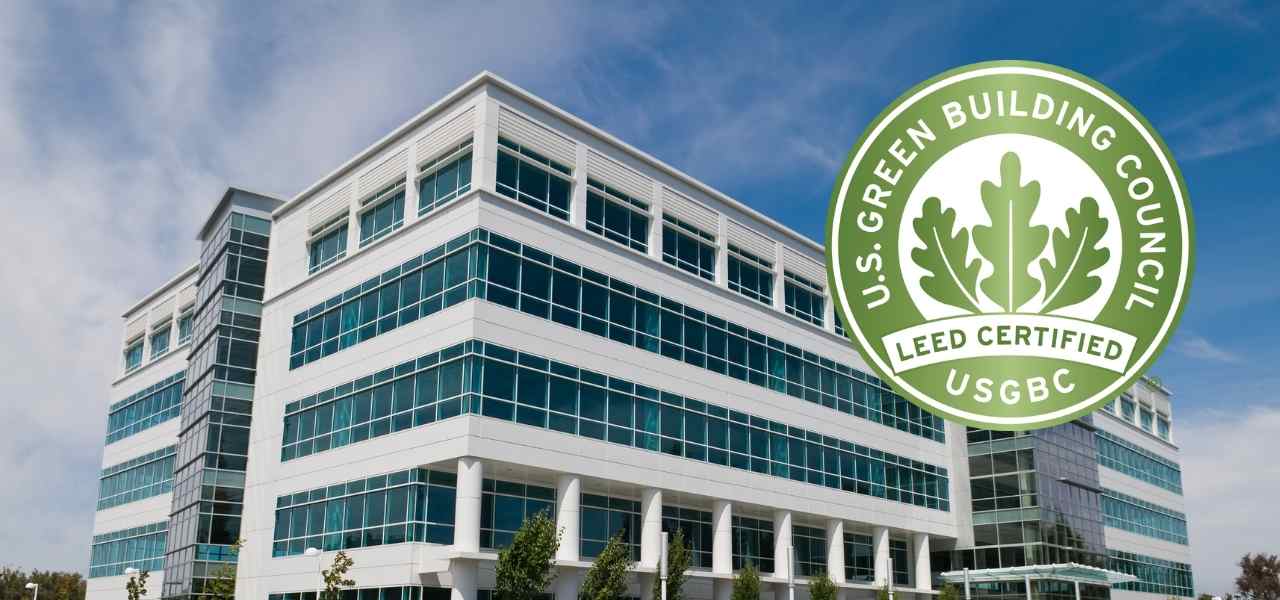Amid rapid urbanization and increasing environmental concerns, sustainability has become a crucial focus for commercial buildings. As the demand for sustainable practices transitions into a mandate driven by government policies, Internet-of-Things (IoT) has emerged as a powerful tool for real-time data collection and analysis, enabling precise energy management and resource optimization, allowing businesses to reduce their carbon footprint and operate sustainably.
In this blog, we will examine the importance of sustainability for commercial buildings and the concept of green building certification in India for promoting sustainable practices and the advantages it offers to businesses.
Table of Contents
ToggleImportance of Sustainability in Commercial Buildings
Commercial buildings are substantial contributors to global energy consumption and carbon emissions. According to a report by Carnegie Mellon University, approximately 40% of global energy consumption and 42% of global carbon emissions are attributed to the building sector.
In recent years, government policies have been placing a growing emphasis on Environmental, Social, and Governance (ESG) compliance across multiple sectors. These regulations aim to reduce carbon emissions, improve energy efficiency, and foster sustainable development. Consequently, businesses are increasingly driven to embrace sustainable practices—not just to meet these regulatory requirements, but also to showcase their commitment to corporate responsibility.
Green Building Certifications
The movement towards sustainable building operation is often incentivized and regulated by green building certification programs. In India, frameworks like the Green Rating for Integrated Habitat Assessment (GRIHA), Indian Green Building Council (IGBC), and Leadership in Energy and Environmental Design (LEED) are instrumental for stakeholders aiming to create and maintain high-performance buildings.

These certifications are essential for:
- Standardization: They establish benchmarks for energy efficiency and sustainable operations, promoting a uniform understanding of what constitutes a ‘green’ building.
- Marketability: Properties with green certifications command higher market values and attract environmentally conscious tenants.
- Regulatory Compliance: With government regulations increasingly mandating sustainability measures, achieving certification becomes a strategic necessity.
The Role of IoT in Achieving Sustainability Goals
As the commercial building sector moves towards greener alternatives, leveraging IoT technology becomes paramount in achieving sustainability and environmental goals. Let’s explore the benefits of employing IoT technology to automate and control building operations:

1. Reduced Energy Consumption
IoT-powered HVAC automation allows for real-time monitoring and control of heating and cooling systems based on occupancy and environmental conditions. Smart thermostats and sensors can adjust temperatures dynamically, ensuring optimal comfort while reducing energy costs by preventing overcooling or overheating.
2. Centralized Asset Visibility
A centralized dashboard provides facility managers with real-time insights into energy consumption, occupancy levels, and equipment performance, allowing for streamlined processes and better resource utilization. By analyzing this data, operators can identify inefficiencies and implement targeted improvements, ultimately leading to reduced operational costs and enhanced sustainability.
3. Environmental Monitoring
IoT sensors can monitor critical environmental factors such as CO2 levels, temperature, and humidity. It helps in making informed decisions related to indoor air quality and energy use. By continually measuring and analyzing these parameters, building managers can ensure compliance with environmental standards and make necessary adjustments to reduce their carbon footprint.
4. Predictive Maintenance
Faulty assets not only compromise operational efficiency but also tend to consume more energy. IoT solutions enable predictive maintenance by analyzing performance data and identifying patterns associated with equipment and potential failures.
5. Temperature Compliance for Cold Rooms
In sectors like food storage and pharmaceuticals, maintaining strict temperature controls is crucial. IoT-enabled temperature monitoring solutions provide real-time insights into cold room conditions, ensuring compliance with safety regulations. Alerts can be generated if temperatures fall outside acceptable ranges, facilitating timely interventions to prevent spoilage.
6. GRID / Solar Energy Monitoring
With the growing adoption of renewable energy sources, monitoring energy generation and consumption is vital for optimizing energy use. Real-time tracking of grid energy consumption and solar power production through smart energy meters allows for effective data analysis. This enables building managers to maximize the use of on-site renewable energy, reduce reliance on grid energy during peak hours, and promote a sustainable energy ecosystem.
How Zenatix Can Help Businesses Achieve ESG Goals
Zenatix by Schneider Electric stands at the forefront of this shift towards IoT-driven building automation solutions for commercial buildings. Our tailored asset monitoring and control solutions provide detailed insights into energy consumption patterns, facilitate predictive maintenance scheduling, and deploy asset automation, enabling organizations to operate sustainably while fulfilling their operational and regulatory obligations.
Contact us today to set up a free consultation with our energy experts and start your journey towards a sustainable future.
